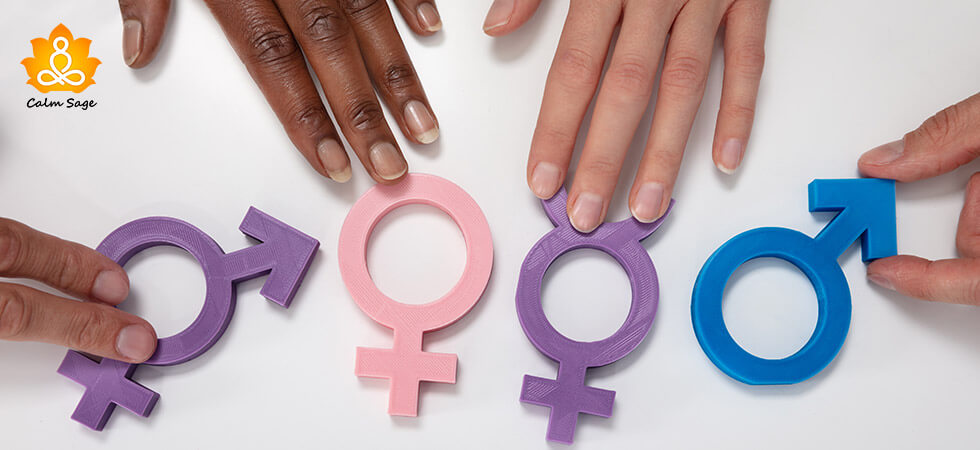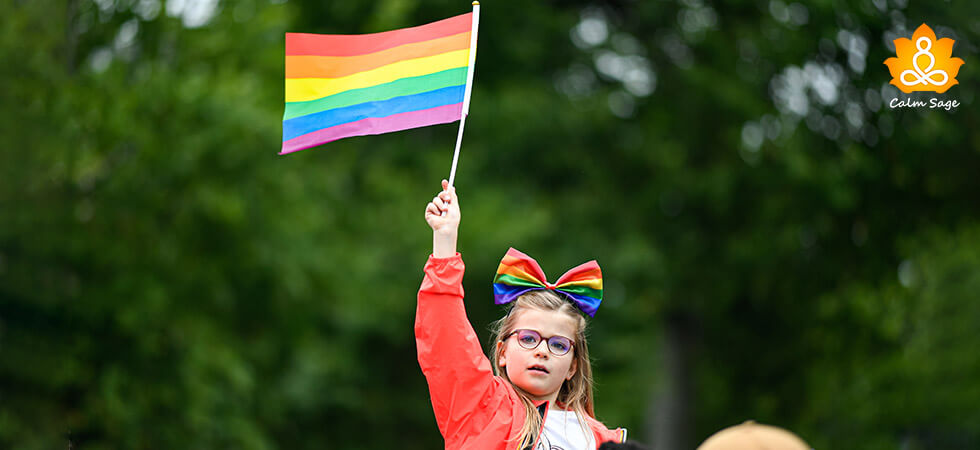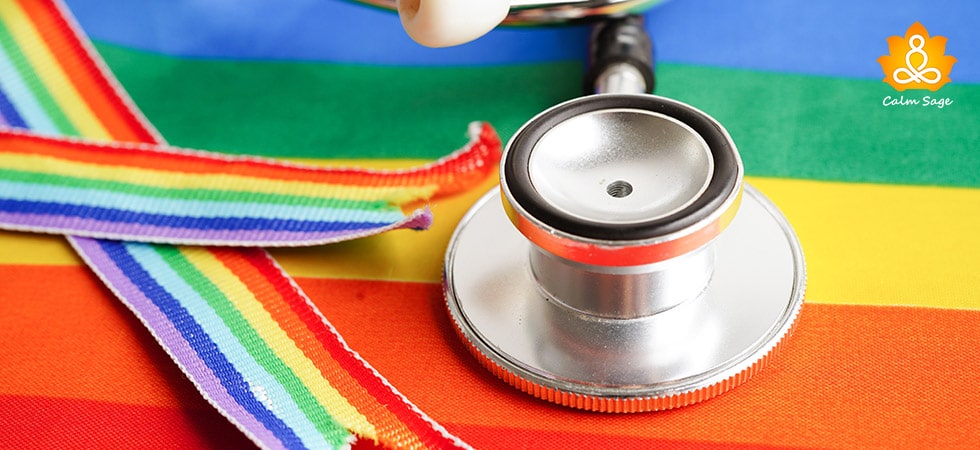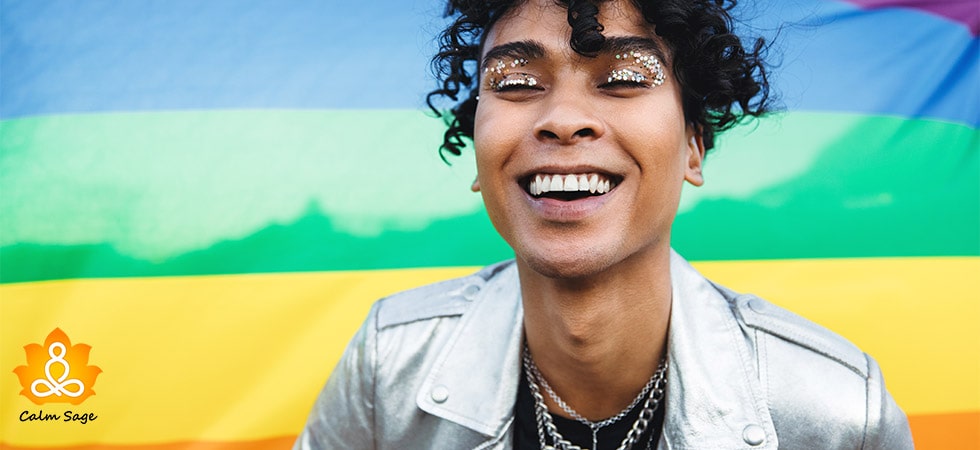The Different Gender Identity Terms You Need To Know About

I’ve heard many people use the term “Gender identity” and “Sexual Orientation” interchangeably. Many people get confused when they hear the terms gender and sex. What they fail to realize is the huge difference between these two terms.
Gender identification is how you identify – as a male, female, either, or none of them. Gender identities can change over time as the identities exist on a diverse spectrum.
In this blog, we’ll be exploring the subtle differences between gender, sex, and gender expression, learn the different gender identity terms, and how you can get support for your gender identity as a proud member of the LGBTQIA+ community.
What Does Gender Identity Mean?
Gender identity is the sense of your view of your gender. Gender, while can be assigned at birth, can change over time. Others can’t define your gender and the gender you identify with may very well differ from the sex you were born with. A gender identity example can be when a person identifies as a male or androgynous even if they are born with female sex organs and were assigned the female sex at birth.
Gender identity is non-binary, flexible, and can evolve. This is OK! Gender and sex are two different terms. How you identify internally is your gender identity but your biological developments define your sex.
There are different gender identities – apart from male and female. Knowing the different gender identity terms can help you and your loved ones figure out the identities one can associate with or is comfortable with.
What Does Sexual Identity Mean?
Sexual identity is defined by your biological factors including reproductive organs, genes, hormones, etc. Sex identity is not binary and while you may have hormones or genes of a particular sex, you still can have reproductive organs of the other sex. This is referred to as being intersex.
Let’s take a look at some of the different gender identity terms and what they mean.
The Different Gender Identity Terms
1. Agender: People who identify as agender do not identify as male or female. They don’t have a gender, as simple as that.
2. Androgyne: This gender identity is when you identify as both – male and female and can have traits of both.
3. Bigender: As the gender identity term suggests, this is when you identify with two genders.
4. Butch: Butch is an identity term that is mostly used to describe lesbians with masculine traits or whatever society defines as “masculine”.
5. Cisgender: This gender identity term is used when you identify with the sex you were assigned at birth. An example can be when a woman, assigned female sex at birth, identifies as a female.
6. Gender Expansive: This gender identity term can be used to describe someone when they have gone beyond the “standard definition” of gender in their culture.
7. Gender Fluid: When someone identifies as gender fluid, it means they are neither here nor there when it comes to the defined social gender expectations.
8. Gender Outlaw: As the term suggests, this is when you refuse to let others define your gender.
9. Genderqueer: Genderqueer is when your identity is not aligned with the social norms expected of your assigned sex. This gender identity term can also be used if you identify with different genders.
10. Non-binary: Non-binary is a gender identity term that can be used to identify with a gender other than female or male. People who identify as non-binary are more likely to use they/them pronouns.
11. Omnigender: This term means that you have and/or identify as all genders.
12. Polygender/Pangender: This gender identity term refers to those who have experienced more than one or two genders.
13. Transgender: This gender identity term is used when one identifies as a different gender than the sex they were assigned at birth. For example, a woman can identify as a male and vice versa.
Gender Identity vs. Gender Expression
Gender identity, as we’ve explored, is way different than gender expression. Understanding the difference between the two is as important as understanding the difference between gender and sex.
Gender identity is how you identify (internally) and gender expression is how you express yourself (externally). Gender identities can be expressed in many ways (even non-verbally). Your gender expression let other people know or perceive the gender you identify with.
The factors that can help in gender expression can include:
Clothing: The clothes you choose to wear to express the gender you identify with can be one of the factors. You can choose to wear masculine clothes to express yourself as a male. The same applies to female gender expression as well. You can choose different clothes to help with gender expression.
Behavior: Certain behaviors can also help in gender expression. How you behave according to the social norms can help express the gender you identify with.
Pronouns: Another best way of gender expression is through pronouns. You can use your preferred pronouns to help you express your gender identity. If you identify as a non-binary, then you can choose your pronouns like they/them and urge others to refer to you with these pronouns.
Find Support In Your Community
If you’re struggling with your gender identity or sexual orientation, then you can seek support from several organizations. Support is important when it comes to being accepted and feeling accepted.
Even today, not many people are comfortable with accepting a different gender identity but to help our rainbow community feel loved and accepted we need to lend our hand. And that can be done by suggesting or reaching out to these resources:
- LGBT-Friendly Therapy
- LGBT friends and community members
- Support groups for LGBTQIA+ youth, young adults, and adults
Other resources to seek support:
- Crisis Text Line: Text at 741-741
- The Trevor Project: Call 1-866-488-7386 or text START at 678-678
- Trans Lifeline: Call 1-877-565-8860
- National Suicide Prevention Lifeline: Call 1-800-273-8255
- LGBT National Hotline: Call 1-800-843-4564
Understanding and accepting the different gender identities is very important when it comes to showing our love, acceptance, and support to the rainbow community. Gender identity is not always aligned with the sex you were assigned at birth and that’s OK.
Your self-discovery and how you identify are valid and a part of your identity so don’t be ever ashamed of it. Your gender identity is personal to you and you should express it safely and proudly as you can. Trust me, there’s no right or wrong when it comes to expressing your gender identity and sexual orientation.
They are a part of you and they are beautiful, just like you!
Happy Pride!
Take Care!




















